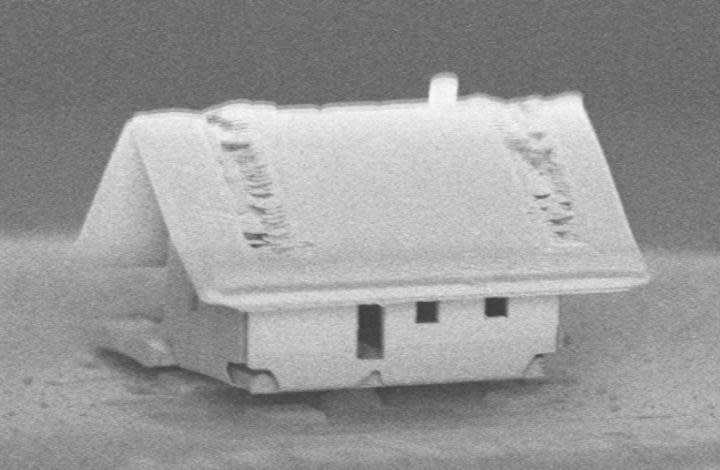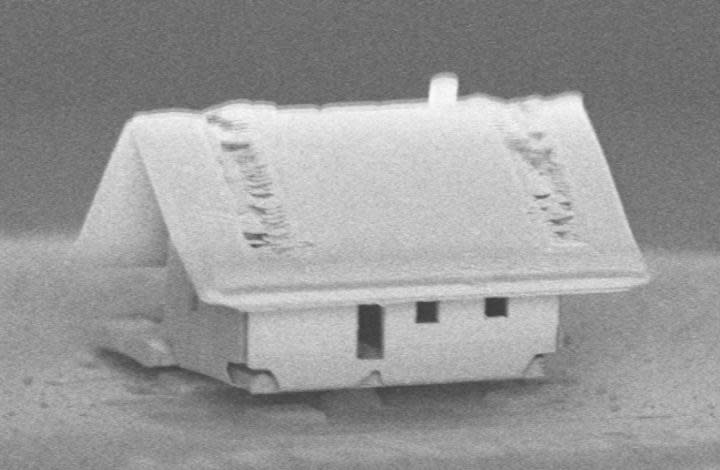The tiny house craze has gone too far
This one's for science, though.
Researchers in France have built a teeny, tiny house. It's just a few micrometers wide, too small for even a mite to fit inside, and demonstrates that a focused ion beam and a small robot can create 3D microstructures with incredible accuracy and precision. "For the first time we were able to realize patterning and assembly with less than two nanometers of accuracy, which is a very important result for the robotics and optical community," Jean-Yves Rauch, a researcher on the project, said in a statement. The work was published recently in the Journal of Vacuum Science and Technology A.
First, a thin sheet of silica was placed on the tip of an optical fiber and then an ion beam was used to cut out the shape of the house and its windows. To fold the walls up, the ion beam was used to just score the silica membrane, and once it was thin enough, it folded up 90 degrees all on its own. Once the walls and roof were in place, the µRobotex system used gas injection to stick the edges together and a low-power ion beam to create a tiled pattern on the roof.
Most of the process was automated, but the team is working to make the entire assembly automatic. The researchers are also aiming to create even small structures that could fit onto carbon nanotubes 20 to 100 nanometers in diameter.



